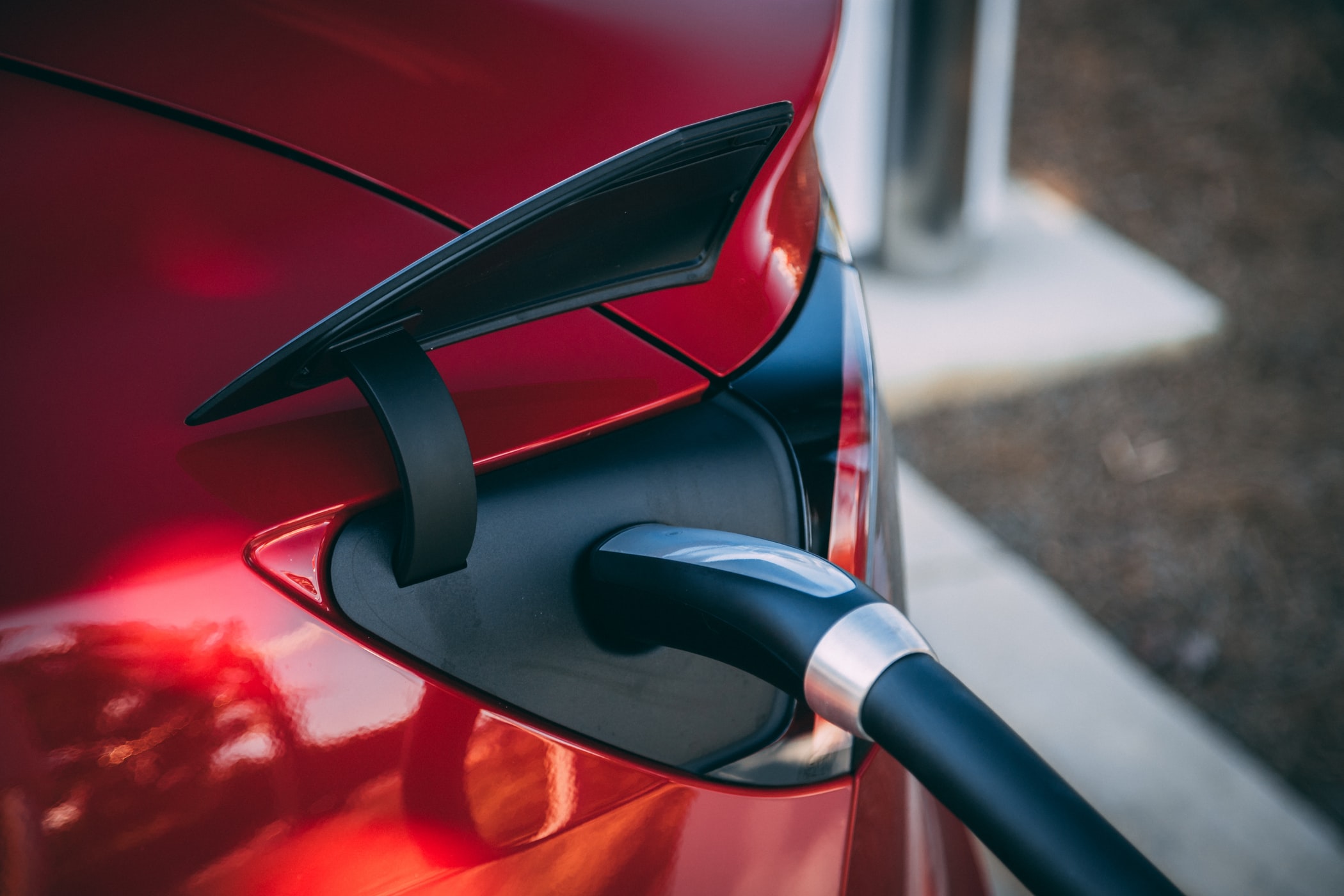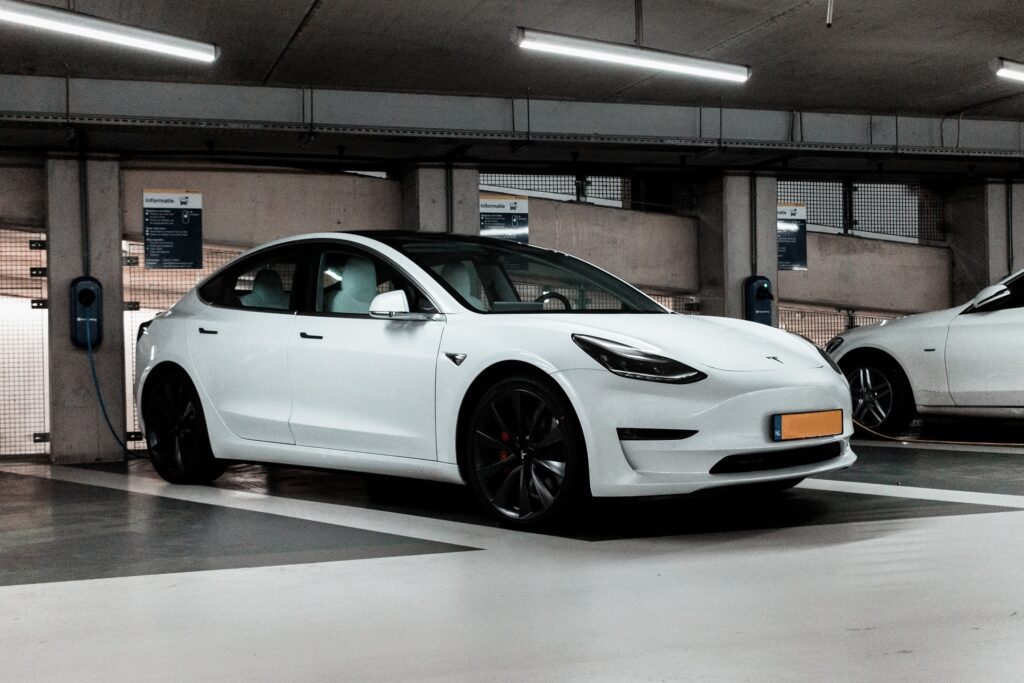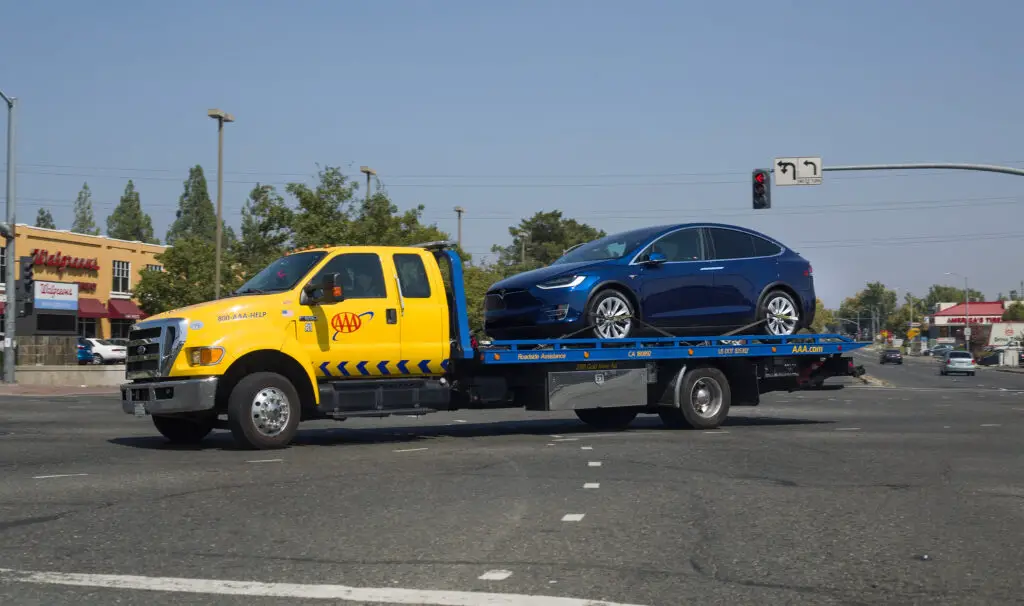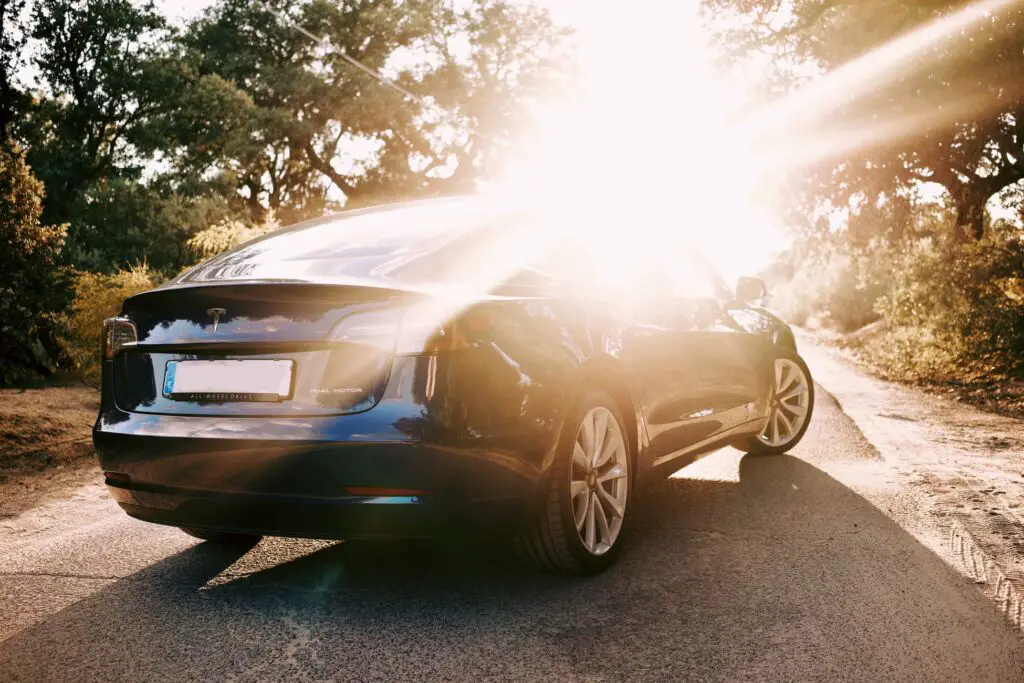
Rechargd.com is reader supported. We may collect a share of sales or other compensation from the links on this page. As an Amazon Associate, we earn from qualifying purchases.
Electric cars are relatively new, but it’s obvious they’re the future of motoring. Cars with internal combustion engines are a dying breed, and the UK recently announced a push to ban sales of all ICE cars by 2035. In a few decades, seeing a petrol car on the road will be much less common than it is today, which is why so many people are looking into getting an EV before they become mainstream. As such, we have to address several important questions, like how much do electric cars depreciate, or how expensive they are to own. We’ve already addressed the issue of depreciation with our Tesla Model 3 depreciation guide, so for this article, we’ll be taking a look at precisely how much it costs to own a Tesla.
In short, owning a Tesla will save you tons of money, both short and long-term. Obviously, there are several factors determining how much it will cost to own and run a Tesla, but here’s the short and sweet answer. Teslas hold their value up to two times more than ICE cars, and up to three times more than other electric cars. For the same mileage, driving an electric car and charging it is up to three times less expensive than using petrol/diesel in a normal car. Teslas are notoriously easy to maintain, costing just a fraction of what it would cost to run a petrol car.
Want to know how we came to this conclusion? Read on to find out the key costs involved if you’re considering buying your first Tesla.
1. Cost of Charging
Obviously, the most significant difference when switching over to electric cars is the lack of need to fill up with petrol or diesel. People seem to think that being able to fill up quickly is an advantage, but think about it, how many times do you actually need to fill up a week?
Most people charge their EVs at home or even at work since every new EV car on sale can do at least 100 miles without stopping. That’s more than enough for the daily commute, even if you live in a neighboring city.
If you own a Tesla, things get better, because the base Model S can do 270 miles, the Model 3 has a range of 250 miles, and the Model X can do 250 miles as well in standard trim. Obviously, those figures rise to well over 300 miles if you own a long-range version.
To give you some perspective, the distance from London to Edinburgh is 282 miles, or, in other words, less than a single charge range on the Model 3 Long Range. With that in mind, let’s use that distance as a basis for the following comparison between a Model 3 and an equivalent petrol car.

Tesla claims that their models have a charging efficiency of 85%, meaning there’s just a 15% energy loss between the outlet and the car’s battery (wall-to-wheels). The Model 3 LR has a 75 kWh battery, so if we assume a cost of 15p ($0.19) kWh (per kilowatt hour of electricity), that comes out to about £13 ($16.78) for a single, full charge. With that, you can get to Newcastle and still have a bit left in the tank.
Something like a Ford Focus might see around 40 mpg if you drive sensibly (real-world economy), bearing in mind it doesn’t even come close to the Model 3 in terms of performance. To drive 280 miles, a car averaging 40 mpg will need 7 gallons.
At £4.5 ($5.81) per gallon, and we’re being generous here, it’ll take £31.5 ($40.67) to fill up the Ford. That’s three times as expensive as the Tesla, which is what other studies found as well.
Obviously, this also depends on the type of driving you do, but we took the worst-case scenario and it still plays out to Tesla’s advantage. If we take a look at city driving, we’ll quickly find out that combustion engines return significantly worse mileage, and unless they’re equipped with stop/start systems, they waste away fuel just idling in rush hour traffic.
It frankly doesn’t matter what type of driving you do, because at the very least you’re saving three times as much compared to an ICE car. If you have free supercharging available where you live, things get even worse for fossil fuel cars.
Tesla has recently discontinued free supercharging for most customers and currently charges £0.24 per kWh in the UK (see latest price) which is still about 50% cheaper than petrol for the Model S (over a 1400 mile journey) or 98% cheaper in a Model 3.
Tesla also have a helpful comparison calculator here.
Cost may vary depending on the vehicle location, configuration, battery age and condition, driving style and operation, and environmental and climate conditions.
2. Cost Of Insurance
Again, this is going to vary based on where you live and your driving history, but we can do some rough estimates to see how it compares to the average car. For the sake of simplicity we’re going to go with the Ford Focus, which is a decent family car, albeit cheaper than the Tesla.
Really though, we’re just trying to give internal-combustion engined cars a fighting chance. The more expensive a car is the more it depreciates, and usually, the bigger the engine the less fuel-efficient it is.

Given that we know just how little Teslas depreciate compared to other cars, choosing a cheaper ICE car means we’re at least narrowing the gap in terms of depreciation. Smaller cars use smaller engines, so that’s why we’re choosing a Focus and not something like a Mercedes C63S AMG (sub 20 mpg).
Insuring a Ford Focus is $238 a month or $2,856 a year. Insuring a C63 AMG costs roughly twice as much as the Ford, i.e. $5,500 a year, proving once again why we chose a ‘normal’ car and not a performance one. However, in most Youtube videos and car forums, the Model 3’s performance is usually compared to cars like the AMG and the BMW M3/M4.
The cost of insuring a Model 3 in California is $1,900 (annually), quite a bit cheaper than even the Focus. In the UK, insuring an electric car is different since it depends on the car’s bracket, how close you live to a city, whether you have any points, claims, how long you’ve held your license, how old you are, etc.
For novice drivers who just got their license or live in the city, it’s going to be more expensive to insure something like a Model 3 than a Ford Focus (up £1000 more expensive), but this is rarely the case as most learners can insure the car on one of their parents’ plans.
That, coupled with the fact that you’re going to save at least twice that amount a year in not paying for petrol, makes buying an electric car more than worth it.
3. Cost of Maintenance
Maintaining a Tesla is dead simple because there’s honestly not much to maintain. Apart from normal suspension components and stuff usually found on the undercarriage, there are very few moving parts inside a Tesla.
Annual tire rotation is actually optional. Only worthwhile if you see significant differential wear on inside vs outside of tire.
— Elon Musk (@elonmusk) June 10, 2019
There’s no engine, so you don’t have to deal with changing oil or filters, which as we all know, can be quite expensive. This also eliminates the potential of breakdowns of a mechanical nature, since if you do have any gremlins, they’re going to be electrical.
Tesla recommends replacing the cabin air filter every 2 years, or a bit sooner if you live in a particularly dusty, dry environment. If your Tesla has the HEPA filter, Tesla recommends replacing it every 3 years.
A brake fluid test is recommended every 2 years. If contamination is found, you’ll need to replace the brake fluid.
Air Conditioning service is recommended every 2 years for the Model S, every 4 years for the Model X, and every 6 years for the Model 3. Do you know of any other car which has a 6-year service interval for the AC?
Rotors and brake pads on a Tesla wear off up to two times slower than on any other ICE car, since Teslas use regenerative braking to absorb energy and convert it back into power for the batteries.
If you live in a cold-weather region, Tesla recommends cleaning and lubricating the brake calipers once every 12 months or once every 12,500, miles whichever comes first.
Anyone who’s ever driven a Tesla will know what we’re on about. If you drive sensibly, you very rarely have to touch the brakes in a Tesla. By planning ahead and lifting off before you get to the traffic light or the car in front of you, you’ll really only need to apply the brakes once you’re almost at a standstill.
The regenerative braking force is relatively strong, and it’s just one of those things you have to get used to if you’re coming from a non-electric car. You soon get used to it though and realize just how much more efficient it is than braking all the time and wasting all that energy in the form of heat.
Tesla’s recommended maintenance item up to 10,000 miles is just tire rotation. In fact, plenty of owners report spending $0 their first 30 to 40,000 miles. Small issues are usually quickly resolved by Tesla under warranty, and quite often by the Tesla Mobile Ranger which comes to your location to do the repair.
There’s often this myth on the internet that batteries will eventually cave and give out on an EV. Although that’s partially true, it doesn’t happen until you’re well into triple digits. In fact, most car batteries are designed to last 300,000 to 500,000 miles, the equivalent of 1,500 cycles. Cycles refer to how many times you empty and charge the battery pack.

In a Tweet by Tesla CEO, Elon Musk, he indicated that the cost of replacing the battery modules in the Model 3 will cost anywhere between $5,000 to $7,000. That might sound like a lot, but think about how much mileage you can get from the original battery pack, and it doesn’t sound like a lot.
Model 3 drive unit & body is designed like a commercial truck for a million mile life. Current battery modules should last 300k to 500k miles (1500 cycles). Replacing modules (not pack) will only cost $5k to $7k.
— Elon Musk (@elonmusk) April 13, 2019
Most combustion engines conk out after 200,000 miles or get significantly worse (slower, lose horsepower, carbon buildup, expensive to maintain). By comparison, the battery is the only thing you’ll need to change on a Tesla, if ever.
Most Model S Teslas are still on their original battery pack, despite having done in excess of 200,000 miles in a few cases. This issue is just like the overhyped fire issue. Yes, a few Teslas have caught on fire over the years, but there are hundreds of thousands of Teslas on the road today. The only reason you’ve seen those isolated examples in the papers is because the car in question was a Tesla.
4. Cost of Repairs
Again, this depends on what’s broken, whether it can be fixed or it needs a replacement. Tesla’s Parts, Body & Paint Repair Limited Warranty lasts for 12 months from the period of purchase. They have a limited lifetime warranty on the sheet metal and 4 years or 50,000 miles warranty on the drive unit.
The battery pack has a 4 years or 50,000 miles warranty as well, and both the wall connector and the touchscreen come with a 4 years warranty. The one small issue with Tesla, if you can call it that, is that they won’t sell you parts directly and allow you to fix your own car, as documented by Rich Rebuilds on Youtube.
You’re going to have to take the car in for a service or repairs to the official dealership, but that’s not necessarily a con. Teslas are extremely complex and intricate cars, not to mention highly dangerous if you start repairing them yourself and you have no idea what you’re doing.
The battery pack alone has enough power to harm or even kill you, so it’s best to leave repairs to the professionals.
Otherwise, fixing a Tesla is no more expensive than fixing any other car. Compared to high-end luxury cars, you might even say it’s a bargain.
Just remember if your Tesla breaks down or requires roadside assistance make sure it’s loaded onto a flatbed and not towed with the wheels on the road – otherwise it can cause overheating.
I cover this and more in my guide towing a Tesla.

5. Cost of Accessories
As you can imagine, Teslas come with plenty of optional accessories (much like most German cars). The best and most popular accessories are as follows:
Model 3:
- Wall Connector – $500
- All-weather floor liners – $195
- All-weather interior mats – $145
- Aero Wheel Cap Kit – $50
- Key Fob – $150
- Automatic Garage Opener – $300
- Wireless Phone Charger – $125
- Roof Rack $450
- License Plate Frame – $40
- Car Cover (Tarp) – $300-$350
- Snow Chains – $115-$290
Model X
- Wall Connector – $500
- Hitch Rack – $539
- Rear Trunk Load Floor – $120
- HEPA Air Filtration Upgrade – $500
- Enhanced Anti-Theft – $350
- Quick Connection Phone Dock – $34
- Coat Hooks – $50
- Tow Package – $1,250
- Car Cover – $450-$500
Model S
- Wall Connector – $500
- All-Weather interior set – $245
- Anti-Theft – $350
- Integrated Center Console – $1,250
- Panoramic Roof Sunshades
- Roof Rack for Glass Roof – $550
- Carbon Fiber Spoiler – $1,500

Cost of Ownership Between Tesla Cars
The cost of owning a Model X compared to a Model 3 isn’t massive in the long run. Obviously, things like insurance are going to be more costly with the larger Model S and Model X compared to the Model 3, but nothing too concerning.
The cost to fill them up is roughly the same, since cost per kW is equal across the board, although the model 3 is more efficient than the S because it weighs less and has a more efficient motor & battery.
The main difference is how much heavier the Model X and how much less aerodynamic it is, so it’s not going to use its battery pack as efficiently as the Model 3 (we’re still talking margins in the 2%-3%, if that).
The Model 3 is cheaper than both the Model S and the Model X, but it’s also the newest and most desirable car as well.
It’s been sold out since Elon Musk announced its launch, and we recently found out it’s the best car to own when it comes to deprecation (lack of depreciation that is).
Obviously, the Model X and the Model S are going to be worth more if you decide to sell, but perceptually, the Model 3 will have kept its value better.
Let’s Recap
Owning a Tesla isn’t just good for the environment, but it’s great for your wallet as well. They cost three times less to fill up, hold their value much better than other cars on the road, have consistent over-the-air software upgrades, are easier to maintain, and are genuinely more fun to drive in most scenarios.
The instant acceleration from the electric motors can put a smile on anyone’s face, even the most hardcore anti-EV petrolhead. What else is there to say? There’s a reason Tesla’s called the biggest thing to happen to the automotive industry since the invention of the motor car, and that’s because their cars are brilliant.
Bonus: Do Teslas Keep Their Value?
If your looking into the costs of owning a Tesla, one key thing to remember is that a car is an asset, and so it’s resale value after X number of years of ownsership is important piece of the puzzle when it comes to assessing the affordability of owning your Tesla.
It’s common knowledge that new cars devalue the minute you drive them off the showroom floor by about 15% and then 10% per year (on average).
While Teslas devalue over time just like any depreciating asset, they do, remarkably devalues the least out of any car on the market today.
The truth is that the Tesla Model 3 depreciates significantly less than the equivalent internal-combustion engine vehicle. After 36 months of ownership, the Model 3 retains 69% of its initial price.
Read the full report right here: Does Tesla Model 3 Keep its Value?
